Chess is one of the most popular board games of all time. It’s widely loved, played worldwide for centuries and has inspired one of the most popular Netflix series in recent times: The Queen’s Gambit.
So, if you’ve just been introduced to chess, this article will guide you by providing tips that will help you learn chess the right way.
You’ll be able to take your first steps as a beginner and proceed to intermediate and advanced levels when you follow the tips and guides presented in this piece.
We’ll explore the fundamentals of the game alongside key categories such as the opening, middlegame, endgame, and other aspects like strategy, tactics, and calculations to help you learn how to play chess.
This article will provide a complete guide to getting started in chess, and when you finish reading, you’ll understand:
- How To Learn Chess
- How To Learn Chess Openings
- How To Learn Chess Middlegame
- How To Learn Chess Endgame
- 6 Effective Tips To Master Chess
How to Learn Chess
The first step in mastering the game of chess is to know the game’s rules. These chess rules are quite easy as the game consists of only sixteen pieces for each side.
Know the Rules
The basic rules involve setting up the chess board and knowing how to move each chess piece. The concept of a check, checkmate and stalemate are other important rules as they define the outcome of games.
Once you understand the basics of how to play, you can learn strategies and tactics to deepen your understanding of the game.
Who knows, perhaps this might be the first step on your path to becoming the next grandmaster.
How To Learn Chess Openings
An opening is a sequence of moves that occur at the earliest stages of a chess game.
Openings can transpose from one variation to the other. The word “opening” itself is the earliest phase in chess.
Before learning any chess opening, you must first understand chess notations.
Most people hate memorizing notations from countless opening variations published in chess books or software. Yet, this can be an effective means to master chess openings.
Understand Opening Principles
The opening is an important aspect of any chess game. A game is decided by how well the players handle the opening.
Openings are the basis of the foundation of your attack or defense in the game and have to be played with the utmost attention to detail. You’ll struggle in the middlegame and endgame if your opening is weak.
Here are 7 opening principles to understand:
- Develop your pieces: Development means moving your pieces out from their starting squares and getting ready for battle.
- Do not move a piece twice: While developing your pieces, you shouldn’t move a piece more than once during the opening as this takes away the time for other pieces to be developed and also gives your opponent time to launch attacks.
- Don’t make too many pawn moves: You must move at least a couple of pawns in the opening to let your pieces out.
For example, moving the king’s pawn two squares forward opens lines for the queen and kingside bishop, and moving the queen’s pawn opens lines for the queenside bishop.
Do not waste time by making pawn moves that don’t help to develop your pieces.
- Don’t bring your Queen out too early: You should get your minor officers (bishop and knight) into the game before bringing your most valuable piece. Bringing your queen out too early will expose it to attacks from the opponent’s minor pieces.
- Castle early: Once the pieces get developed, the king becomes vulnerable in the center of the board. To avoid being a victim of a quick checkmate, you should ensure your king is safe by castling early in the game.
- Develop towards the center: Think of the center of a chessboard as the high ground in real warfare. This means that you should strive to control this ground to work your way to victory.
- Clear the back rank and connect your rooks: When you connect your rooks, they protect each other. You can do this by moving out all your pieces and castling your king.
Your rooks can easily move back and forth along the back rank for defensive purposes or to support a pawn-push attack.
Have an Opening Repertoire
Your opening repertoire is a collection of the openings you use regularly. The key to building your opening repertoire is:
- Choose openings appropriate to your level of chess play: Some openings like the Danish gambit where white sacrifices three pawns early on in the game for quick development is too risky for beginners.
- Use statistical information: Statistics from chess software will advise you which variations demand your attention based on the percentage of wins, draws, or losses with each opening variation.
You can learn more in our opening compilation for both White and Black:
Learn Pawn Structure
Pawn structure is basically how your pawns are placed on the chessboard, and there is a lot you need to know about pawns because pawns are the soul of chess according to Philidor.
You must understand how to analyze favourable pawn structures to win at chess.
Here are six pawn structures you should know:
Passed pawn
A passed pawn is a pawn that any other pawn cannot stop on its way to promotion. Therefore, it is one of the biggest assets a player can have in the endgame. Furthermore, a passed pawn imposes a very serious threat to the opponent due to its ability to promote and create a decisive advantage.
Isolated Pawn
An isolated pawn is a pawn that cannot be protected by any other pawns. The isolated pawn can be tremendously weak and may become a target for the opponent’s attack as it requires constant protection.
Connected Pawns
Connected pawns are pawns that can protect each other. They are the strongest pawn structures and as such, you should aim to have these kinds of pawns in your games.
Doubled Pawns
Doubled pawns are pawns of the same color located on the same file. They can be liabilities as double pawns cannot protect each other or do so much.
Hanging Pawns
Hanging pawns are connected pawns that the opponent’s pawns will attack if they move, making it another example of weak pawns. However, hanging pawns can have some advantages associated with mobility, flexibility, and enhanced control of adjacent squares.
Pawn Majority
Pawn majority means that you have more pawns on one side of the board than your opponent. A pawn majority is a valuable asset because it often leads to a series of exchanges and the creation of a passed pawn.
How to Learn Chess Middlegame
The middlegame is another important part of a chess game even though it’s less defined or theorized than openings or endgames. The middlegame begins when chess players have moved their kings to safety and developed most of their major pieces. This phase will put your knowledge of tactics and strategy to the test.
To understand and excel during the middle game, you should:
- Master Tactics
- Brush up on your chess strategy
- Improve your chess calculation
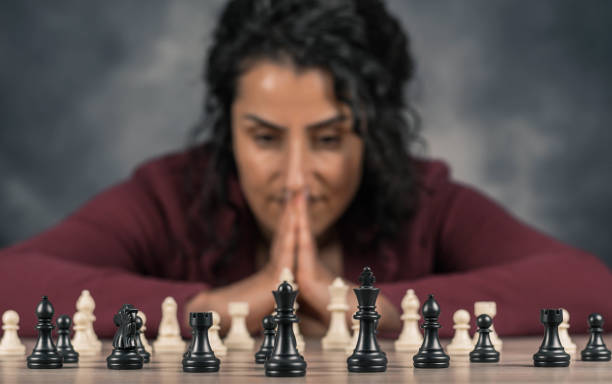
Master Tactics
Famous chess master Richard Teichmann once noted that “chess is 99% tactics”. Some players may disagree about the stat, but no one would argue about the importance of chess tactics. Better tactical vision allows players to see more possibilities, reduce the number of blunders, play beautifully, and score better overall.
Study tactics like skewers, discovered attacks, pins, forks, overloading, decoy, and deflection to improve your middlegame. There are great chess books and puzzles to help you with this. Practice them regularly and ensure to review your games with a coach or an engine.
Brush up on your Chess Strategy
Chess strategy is the purposeful attempt to gain an advantage over your opponent. Unlike tactics, chess strategy involves long-term goals usually related to concepts like king safety, pawn structure, space, piece activity, etc.
Tactics can indeed define a game’s outcome whereas good strategic play creates the opportunity for tactical shots. You can view strategy as the breeding ground for tactics. A good book to learn tactics is Chess: 5334 Problems, Combinations, and Games by Laszlo Polgar.
Improve your Chess Calculation
When calculating a position, you must pay attention to forced moves (checks, captures, and threats) for you and your opponent. You can improve your chess calculation by solving chess puzzles and tactical puzzles.
How to Learn Chess Endgame
Despite its crucial role in helping players to evaluate during the middlegame, the endgame is often the most neglected area of an amateur’s study. More than any other stage (opening or middlegame), the endgame requires knowledge of technical positions. Endgame puzzles are very concrete for both black and white sides with little scope for intuition. Here are some endgame concepts to learn to get better at chess.
6 Effective Tips to Master Chess

Play practice games
You can’t get better at anything without a lot of repetition. Chess is no different. So, take every opportunity to play a chess game – whether on the go, on your computer, or at home.
Analyze your games with a computer or a coach
Playing without reviewing your games is not the best path to improve. You need to learn from playing and reviewing. Chess software and platforms like Aimchess can help you understand each game you play.
Read chess books
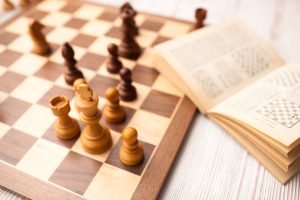
Chess books utilize special learning methods designed to help you learn the game of chess effectively. Some books provide interactive elements in their guide, testing your knowledge with a series of questions as you learn.
These recommended chess books should help you learn chess openings, middlegame tactics, endgames and chess strategy.
Watch chess videos
Videos are more visual and easy to understand for many people. Chess videos can be based on the latest opening ideas or analysis of games. You can attend some online chess lessons or check out popular content creators on platforms like Youtube and Twitch.
Study Classics
Today’s extensive opening theory is based on an exhaustive study of the work of previous masters. Without this deep research, we would not have come even close to where we stand regarding theory in chess today. Understanding these chess classics would give you a superior understanding of the game from the perspective of old masters.
Bobby Fischer was one of the most incredible players in the history of Chess, and curiously he had studied more than 1000 games of the old master Wilhelm Steinitz. Every chess genius has studied the classics, including Garry Kasparov, Vladimir Kramnik, Magnus Carlsen, and other world champions.
Frequently Asked Questions
Can I learn chess by myself?
Yes, you can learn Chess by yourself. The game involves only six different pieces, and once you learn the movement of each chess piece and how to checkmate, you’re good to go. Then, you can begin studying openings, tactics, and strategies to improve your game.
Is it difficult to learn chess?
No, it’s not. Chess is a relatively easy game to learn and play. You only need to know the basic rules, how the pieces move, how to checkmate, and a few special rules. However, reaching chess mastery is extremely hard. It requires a lot of time, investment, and dedication.
What is the 50-move rule in Chess?
The fifty-move rule in chess states that a player can claim a draw if no capture has been made and no pawn has been moved in the last fifty moves (for this purpose, a “move” consists of a player completing a turn followed by the opponent completing a turn).This rule aims to prevent a player with no chance of winning from obstinately continuing to play indefinitely or seeking to win by tiring the opponent.
What’s the most important rule in chess?
The following rules are important especially for beginner chess players.
- In the opening, control the center. As White, you should play moves such as e4 and d4 early.
- Develop your pieces quickly. It’s best if you move each piece once in the opening. Generally, develop your knights before bishops. Move your knights toward the center, not the edge of the board.
- Castle as soon as you can. If you don’t do this, you will lose quickly against stronger players.
- Keep pieces protected, don’t leave a piece hanging.
- Have fun. Win with grace and lose with dignity.
How long will it take to learn chess?
The answer is quite simple: the time you dedicate to chess will determine how long it takes to learn chess. You can learn the rules within a few hours. But, if you are looking for a somewhat general answer, 1-2 years of practicing is enough to build a good foundation and consider yourself an excellent chess player.
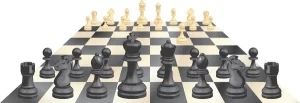



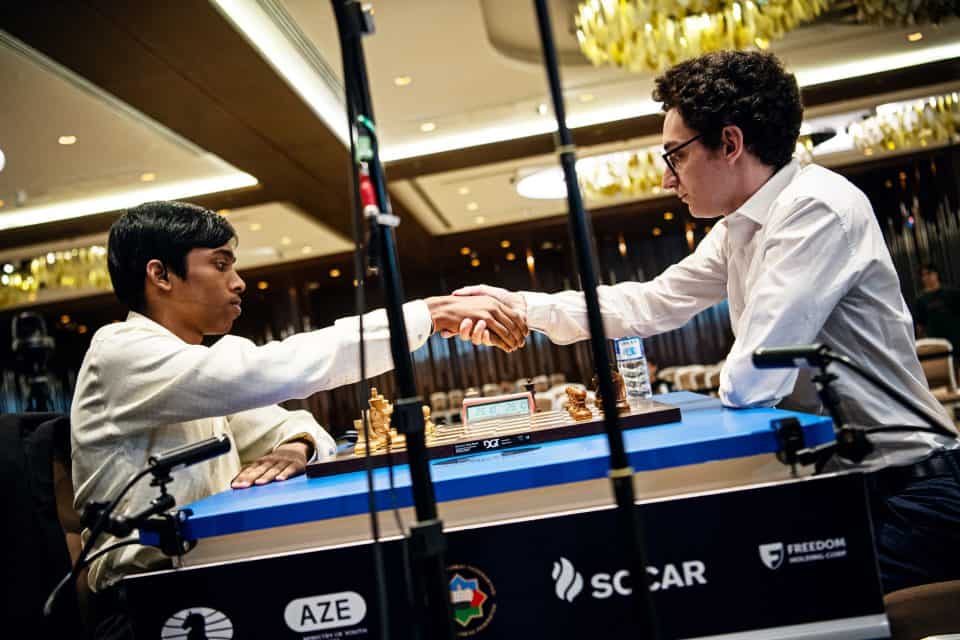
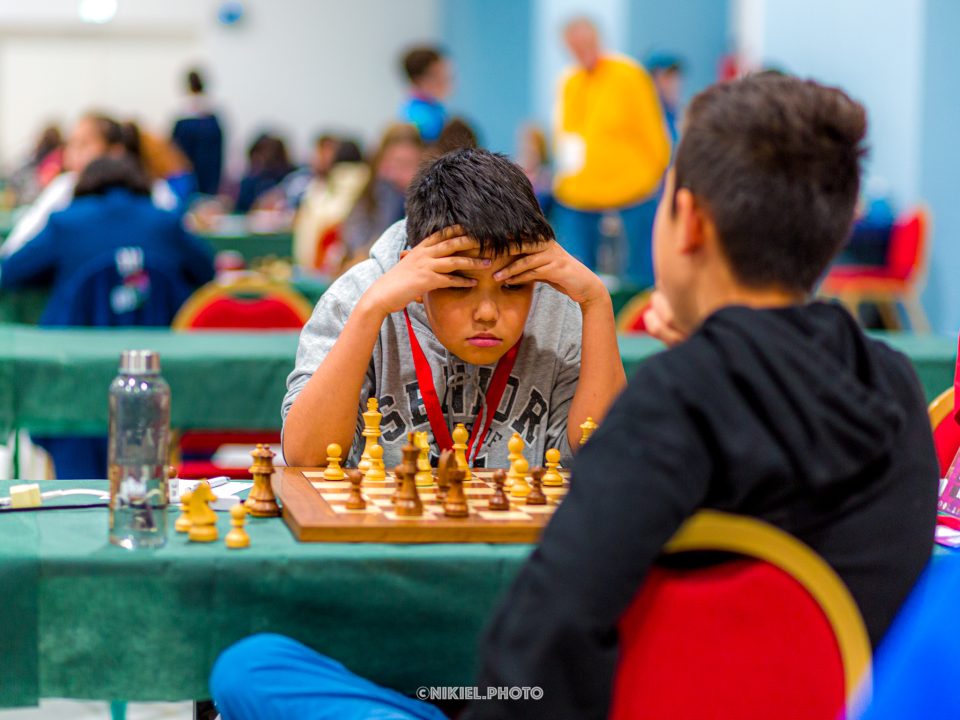
join the conversation